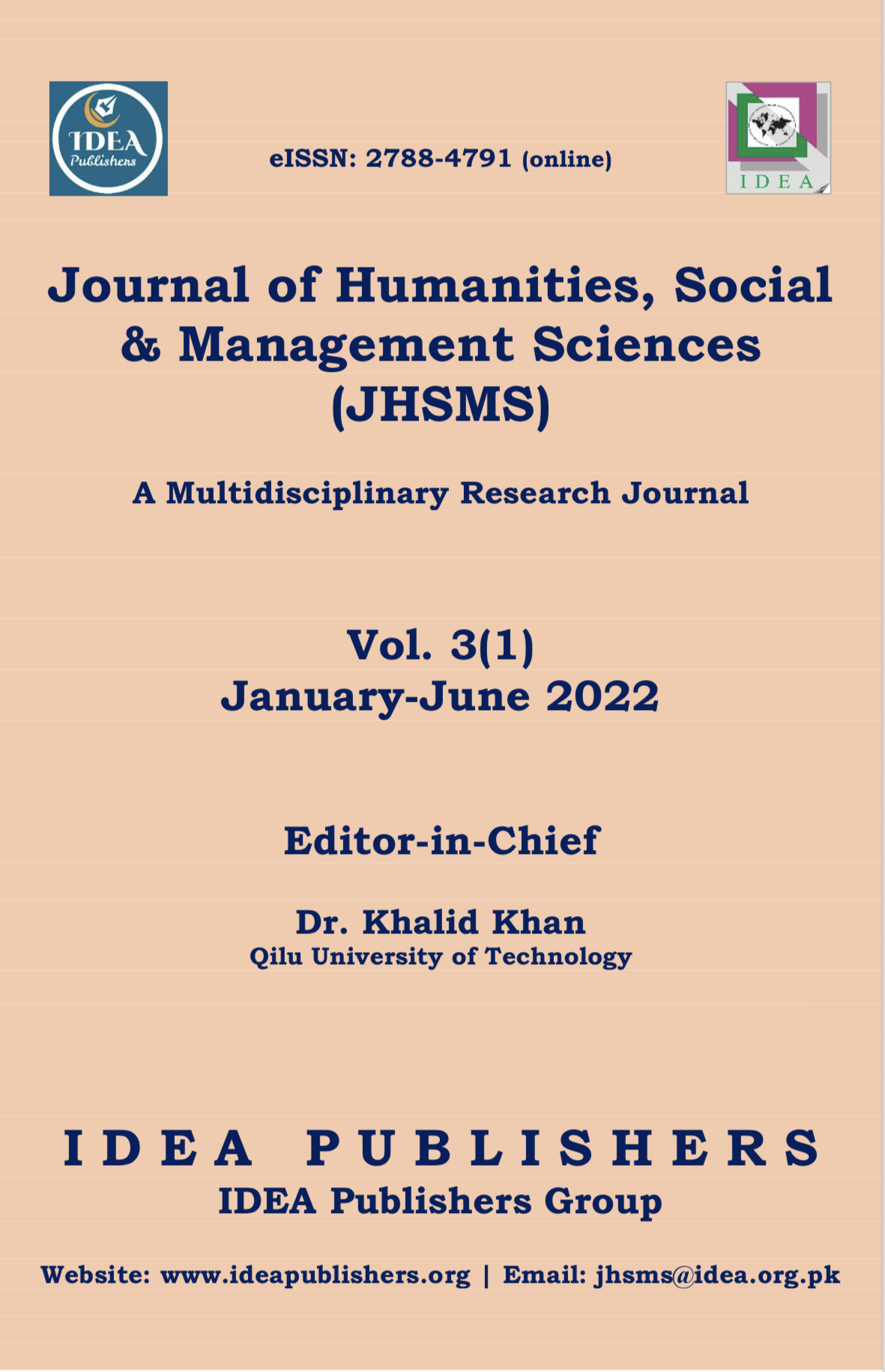The coexistence of religion and politics in Pakistan: an analysis of historical, social, and political factors
DOI:
https://doi.org/10.47264/idea.jhsms/3.1.30Keywords:
Islamist influence, Islamic state, Ideology of Pakistan, Political Islam, religion and politics, religious ideology, instrument of religion, fundamentalismAbstract
In the context of Pakistan, the connection between religion and politics predates its existence. Islam was the faith on which All India Muslim League based its demand for a separate country for India's Muslims. Since independence in 1947, the country's political and constitutional evolution has been significantly influenced by the religion; as political, economic, social, and constitutional debates centred on Islam. Islam has always been a major theme of official ideology in one form or another in practically all political administrations, whether they were under democratic or military authority. In this paper, we have discussed the elements that contributed to the emergence of Islamist political power in the country, using pertinent instances from historical events and political decisions made by successive governments and regimes to illustrate how politics and religion interact. For this purpose, we used secondary technique of data collection i.e., ‘Document Analysis’ and relied on primary sources such as the Constitutions of Pakistan and secondary sources e.g., books and research articles, etc. The study is an extensive review of the existing literature on the subject. The study’s findings show that the state, over the decades, has used the instrument of religion at different times for different purposes.
References
Abbas, (2005). Pakistan’s drift into extremism. Pentagon Press.
Ahmad, M. (ed.) (1986). State, politics and Islam. American Trust Publications.
Ali, K., & Minxing, H. (2021). Muslims preaching movements in British-India: An appraisal of the Tablighi Jamaat and its competitors. Liberal Arts and Social Sciences International Journal (LASSIJ), 5(1), 356–371. https://doi.org/10.47264/idea.lassij/5.1.23 DOI: https://doi.org/10.47264/idea.lassij/5.1.23
Filali-Ansary, A. (1996). Challenge of secularization. Journal of Democracy, 7(2), 76-80. DOI: https://doi.org/10.1353/jod.1996.0023
Barker, E. (1990). New religious Movements: A practical introduction. Bernan Press.
Binder, L. (1961). Religion and politics in Pakistan. Cambridge University. DOI: https://doi.org/10.1525/9780520326958
Chryssides, G. D. (2001). Unrecognized Charisma? A study and comparison of four Charismatic Leaders: Charles Taze Russell, Joseph Smith, L. Ron Hubbard, Swami Prabhupada. Paper presented at the International Conference, The Spritual Supermarket: Religious Pluralism in 21st Century, (London 19-22 April 2001). http://www.cesnur.org/2001/london2001/chryssides.htm
Cohen, S. P. (2004). The idea of Pakistan. Brookings Institution.
Ghazali, A. S. (1997). Islamic Pakistan: Illusions and reality. National Book Club.
Haqqani, H. (2010). Pakistan: Between Mosque and military. Carnegie Endowment. DOI: https://doi.org/10.2307/j.ctt6wpjrx
Hefner, R. W. (2005). Remaking Muslim politics: Pluralism, contestation, democratization. Princeton University.
Hussain, Z. (2008). Frontline Pakistan: The struggle with militant Islam. Columbia University.
Iqbal, A. (1986). Islamization of Pakistan. Vanguard Books.
Jeffrelot, C. (2004). A history of Pakistan and its origin. Anthem Press.
Maniruzzaman, T. (1967). National Integration and Political Development in Pakistan. Asian Survey, 7(12), 876-885. https://doi.org/10.2307/2642531 DOI: https://doi.org/10.2307/2642531
Medhurst, K. (1981). Religion and politics: A typology. Scottish Journal of Religious Studies, 2, 115-134. https://ixtheo.de/Record/164385125X
Nasr, S. V. R. (1994). The vanguard of Islamic Revolution: The Jamat-i-Islami of Pakistan. University of California.
Naazer, M. A. (2018). Islamic Universalism and the Nation State. Liberal Arts and Social Sciences International Journal (LASSIJ), 2(2), 29-41. https://doi.org/10.47264/idea.lassij/2.2.4 DOI: https://doi.org/10.47264/idea.lassij/2.2.4
Qadeer, M. (2006). Pakistan: Social and cultural transformation in a Muslim Nation. Routledge. DOI: https://doi.org/10.4324/9780203099681
Rashid, A. (2008). Descent into chaos: How the war against Islamic Extremism is being lost in Pakistan, Afghanistan and Central Asia. Allen Lane.
Adair-Toteff. C. (2005). Max Weber's Charisma. Journal of Classical Sociology, 5(2), 189-204. https://doi.org/10.1177%2F1468795X05053491 DOI: https://doi.org/10.1177/1468795X05053491
Tucker, R. C. (1968). The theory of Charismatic Leadership, Daedalus, Philosophers and Kings. Studies in Leadership, 97(3), 731-756. https://scirp.org/reference/referencespapers.aspx?referenceid=2341035
Weber, M. (1958). Three types of legitimate rule. Berkeley Publications in Society and Institutions, 4, 1-11.
Weiss, A. M. (1987). Islamic Reassertion in Pakistan. Vanguard Books.
Downloads
Published
How to Cite
Issue
Section
License
Copyright (c) 2022 Muhammad Zubair, Aamer Raza, Saiful Islam

This work is licensed under a Creative Commons Attribution-NonCommercial 4.0 International License.
Please click here for details about the Licensing and Copyright policies of IDEA-PG.















